Peter Dornauf – 23 December, 2012
That China came to modernity late in the twentieth century is a truism, but it came with a ruthless push and intensity as if it were in a mad rush to make up for lost time – hydro dams, flooded cities, huge shifts and relocations of populations. These are the casualties along the way where modern means progress and progress means industrial and technological revolution on a prodigious mass scale.
Hamilton
Tim Croucher and Xu Ze
The Wonder and Loss of Familiar Places
Curated by Leafa Wilson
17 December 2012 - 14 April 2013
In that strident, seminal mid-fifties play, Look Back In Anger, by British playwright, John Osborne, one of the characters describes the difference between two warring protagonists; “You’re hurt because everything’s changed”, says Alison to her father, Colonel Redfern, “and Jimmy’s hurt because everything’s stayed the same.”
They represented diametrically opposing visions of the world in the post-war watershed period when the West was involved in seismic shifts of attitude and sensibilities fuelled by modernist forces and predilections.
That division captures some of the temper driving the attentions of two artists in an exhibition currently showing at the Waikato Museum of Art and History. The Wonder and Loss of Familiar Places is a dual offering involving artist and Wintec School of Media Arts tutor, Tim Croucher and Xu Ze Chinese artist and tutor at the School of Fine Arts at Chengdu University. This is one of those cultural exchanges happily coinciding with the 40th anniversary of diplomatic relations between New Zealand and China. Can art ever be diplomatic? Bit of an oxymoron when you think about it, because lurking not too far beneath the surfaces of these ‘polite’ canvases, there seems to be an element of political bite.
After two years of painting and research, funded by the artists’ institutes and the Asia New Zealand Foundation, the result is twenty two paintings, eleven a piece, of landscape forms in two completely contrasting styles, curated by Leafa Wilson.
That China came to modernity late in the twentieth century is a truism, but it came with a ruthless push and intensity as if it were in a mad rush to make up for lost time - hydro dams, flooded cities, huge shifts and relocations of populations. These are the casualties along the way where modern means progress and progress means industrial and technological revolution on a prodigious mass scale. Physical as well as social change of apocalyptic proportions have taken place in China and Croucher and Xu Ze bear indirect witness to this in their joint exhibition.
Xu Ze belongs to the traditionalist end in Osborne’s spectrum. His paintings exude a kind of old world feel. They have a slightly awkward presence to them, an almost clumsy, clunky use of impasto paint with muddy colours that presents a nostalgic lament for lost homelands. Indeed eight of his eleven landscapes are titled, Homeland.
In contrast, at least stylistically, Croucher has a light deft touch with watered down muted acrylics that give off a translucent effect. What he does is paint vistas, landscapes that stretch for kilometres across creating a panoramic sweep of topography some of which seem decidedly artificial, as if constructed by gigantic earth movers that have created mountainous landforms manoeuvred into place by some colossal feat of engineering. On top of these, he has strategically perched tiny houses, poised precarious on teetering mounds of earth, like pathetic yet poignant sentinels, defiant, refusing to budge.
There’s a touch of the surreal to these works, yet they are all quietly understated despite the actual large physical scale of some of the canvases and paper. The juxtaposition of the old and the new worlds here have an odd frisson, a sense of something out of place, out of scale and incongruent.
Rivers are also a theme. Croucher plies them with modern speed boats and ancient traditional Chinese vessels on the same stage, setting up a strange ambivalence as the two worlds face off in a bizarre tableau, a picture of a nation caught in transition between stasis and transformation.
Xu Ze in his romantic evocation of a China that once existed and which still exists in mind and imagination, references traditional Chinese art styles, (from a distance his work looks like conventional nationalist paintings; craggy outcrops of rock, bare branched trees, tiny village settlements), calls attention to loss, to forfeiture of all things that go to make up identity, the singularity and communal nature of existence that rises up against dispossession and exile.
Peter Dornauf
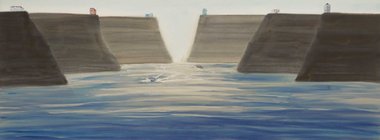

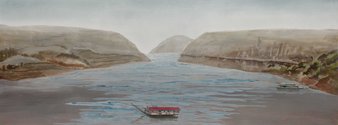
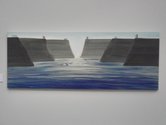
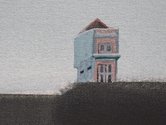
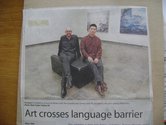
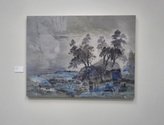

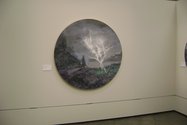
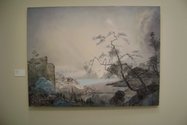
 Advertising in this column
Advertising in this column Two Rooms presents a program of residencies and projects
Two Rooms presents a program of residencies and projects



This Discussion has 0 comments.
Comment
Participate
Register to Participate.
Sign in
Sign in to an existing account.